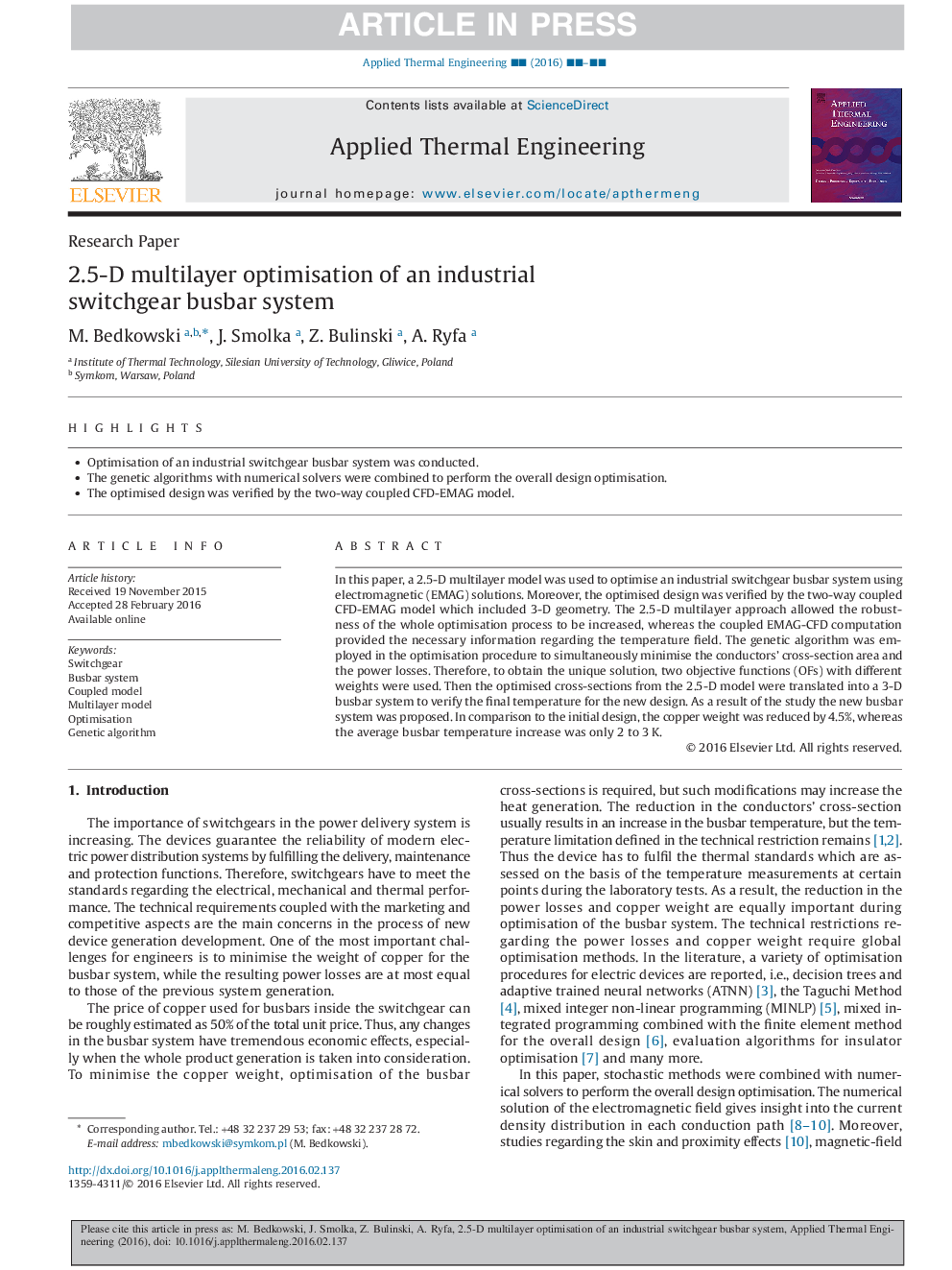| Article ID | Journal | Published Year | Pages | File Type |
|---|---|---|---|---|
| 7047984 | Applied Thermal Engineering | 2016 | 9 Pages |
Abstract
In this paper, a 2.5-D multilayer model was used to optimise an industrial switchgear busbar system using electromagnetic (EMAG) solutions. Moreover, the optimised design was verified by the two-way coupled CFD-EMAG model which included 3-D geometry. The 2.5-D multilayer approach allowed the robustness of the whole optimisation process to be increased, whereas the coupled EMAG-CFD computation provided the necessary information regarding the temperature field. The genetic algorithm was employed in the optimisation procedure to simultaneously minimise the conductors' cross-section area and the power losses. Therefore, to obtain the unique solution, two objective functions (OFs) with different weights were used. Then the optimised cross-sections from the 2.5-D model were translated into a 3-D busbar system to verify the final temperature for the new design. As a result of the study the new busbar system was proposed. In comparison to the initial design, the copper weight was reduced by 4.5%, whereas the average busbar temperature increase was only 2 to 3âK.
Related Topics
Physical Sciences and Engineering
Chemical Engineering
Fluid Flow and Transfer Processes
Authors
M. Bedkowski, J. Smolka, Z. Bulinski, A. Ryfa,
